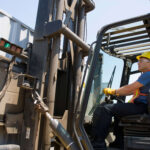The development of humanoid robots has garnered significant attention as they are designed to mimic human form and movement. They rely heavily on articulating joints for their functionality. The seamless motion we observe in humanoid robots is made possible by a complex interplay of precision engineering, advanced materials, and cutting-edge technology, with bearings serving as the base that enables these movements.
Understanding Articulating Joints
Articulating joints are pivotal components in humanoid robots that facilitate movement by allowing different parts of the robot to rotate or move in relation to each other. These joints emulate the mobility and flexibility of human limbs, like arms and legs, enabling robots to perform tasks ranging from simple actions such as walking to intricate activities like grasping objects with precision.
Common types of articulating joints include revolute joints and spherical joints. Each type serves a specific purpose, providing a range of motion suitable for the application. For example, spherical joints, offer a wide range of movement in multiple directions, making them ideal for humanoid robots that need versatile motion capabilities.
The Crucial Role of Bearings
While articulating joints are responsible for the range of motion, bearings play a crucial role in ensuring smooth and precise function. Bearings are mechanical components that reduce friction between moving parts, allowing them to move effortlessly while maintaining structural integrity. In humanoid robots, where precise movement is paramount, the choice of bearings is a critical engineering decision.
Rolling element bearings, such as ball bearings and roller bearings, are commonly used in humanoid robots. These bearings consist of small, freely rotating elements.
Bearings for Articulating Joints
• Miniature ball bearings enable finger movement.
• Arm and leg joints benefit from the rotation capabilities found in spherical plain bearings and rod ends.
• Rotary actuators in shoulders use cross angular contact ball bearings.
• Linear actuators connecting feet to legs and hands to forearms feature 4-point contact ball bearings or deep groove ball bearings.
The efficiency of these bearings directly impacts the robot’s overall performance, affecting factors like energy consumption, speed, and accuracy.
Challenges and Innovations in Articulating Joints
Developing effective articulating joints and bearings for humanoid robots poses numerous challenges. The joints must replicate the natural range of motion found in the human body while remaining lightweight and durable. And, the bearings must withstand the repetitive stress and strain of robotic movements without compromising precision.
Recent advancements in materials science and manufacturing technologies have addressed some of these challenges. High-strength and lightweight materials, such as carbon fiber composites and advanced alloys, contribute to the construction of robust yet agile joints. Miniature ball bearing manufacturers are creating intricate bearing designs that optimize load distribution and reduce friction.
Innovations in bearing technology are also playing a pivotal role in enhancing the performance of humanoid robots. Integrated sensor systems, for instance, provide real-time feedback on joint movements, enabling robots to adjust their actions in response to external stimuli or changing conditions. This level of adaptability is crucial in applications where robots need to interact with dynamic environments.
Real-world Applications
The integration of articulating joints and precision bearings has enabled humanoid robots to venture into diverse real-world applications. From assisting in medical surgeries to performing delicate tasks in hazardous environments, these robots are proving their worth in fields that require a combination of dexterity and reliability.
In industries such as manufacturing and logistics, humanoid robots can navigate complex environments, manipulate objects, and execute tasks that may be too dangerous or repetitive for human workers. Amazon recently conducted a trial with humanoid robots to free up their staff for other responsibilities.
The Future of Humanoid Robotics
As technology continues to evolve, the future holds exciting possibilities for humanoid robotics. Advancements in artificial intelligence, machine learning, and sensor technologies are expected to further enhance the capabilities of these robots. The integration of more sophisticated articulating joints and bearings will likely lead to robots that can emulate human movements with even greater accuracy and finesse.
Articulating joints and bearings form the backbone of humanoid robots, allowing them to move with precision and flexibility. The synergy between advanced engineering, innovative materials, and state-of-the-art technology is propelling humanoid robotics into new frontiers, promising a future where these robots seamlessly coexist and collaborate with humans in diverse settings.
Stay Up-to-Date on Motion Control
CCTY’s monthly newsletter covers advancement in motion control along with tips for finding the optimal solution for your application. Join the mailing list today to stay up-to-date on advancements in motion control, product information and CCTY happenings.


